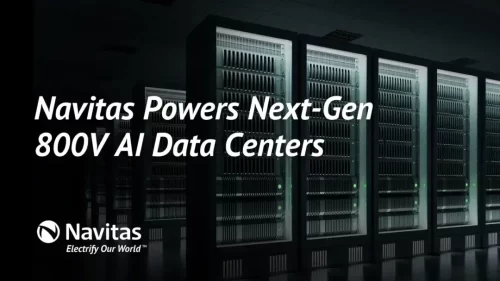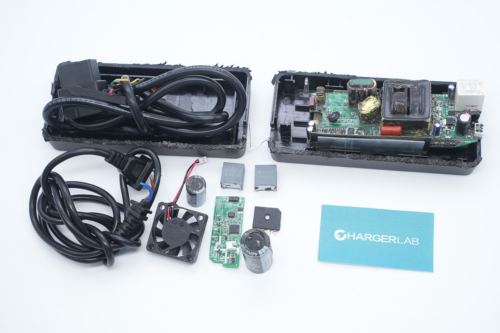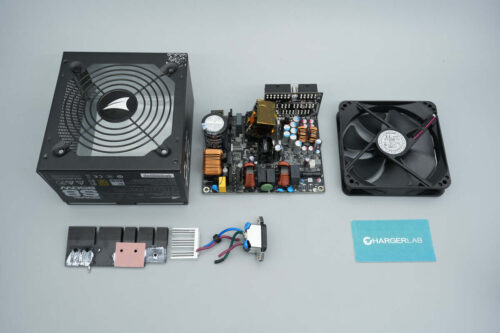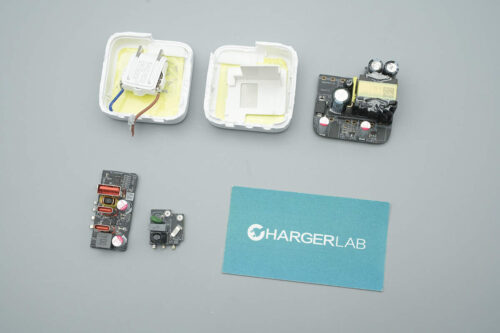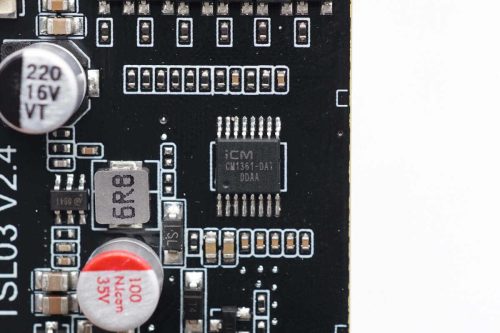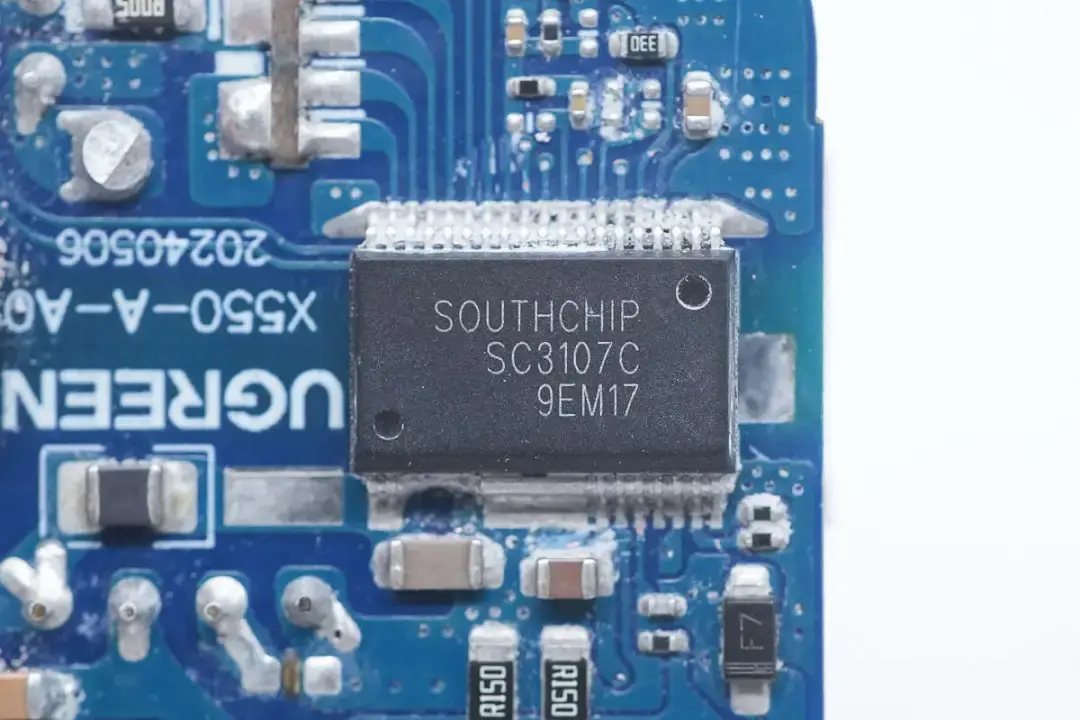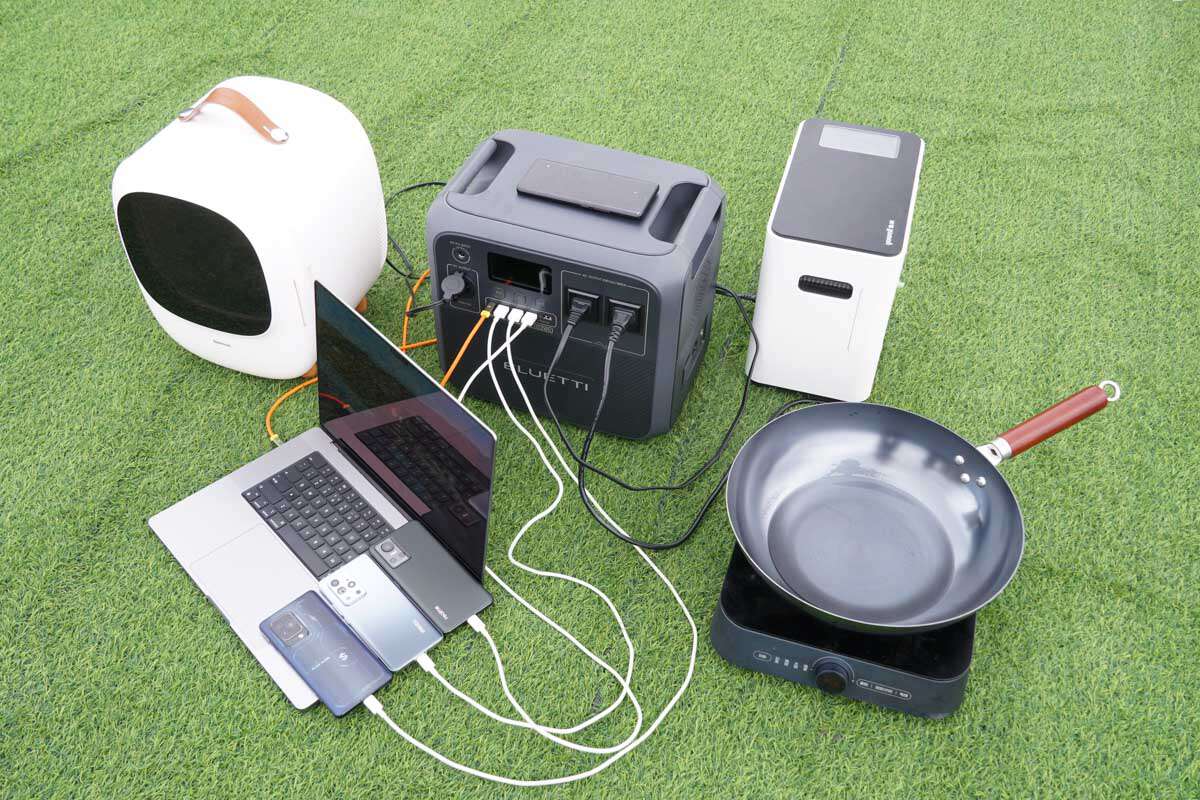Torrance, California – May 21, 2025 – Navitas Semiconductor (Nasdaq: NVTS) today announced its participation in the development of NVIDIA’s (Nasdaq: NVDA) next-generation 800V HVDC power architecture. Navitas’ GaNFast™ gallium nitride and GeneSiC™ silicon carbide technologies will power Rubin Ultra and other GPUs within the Kyber rack-level system.
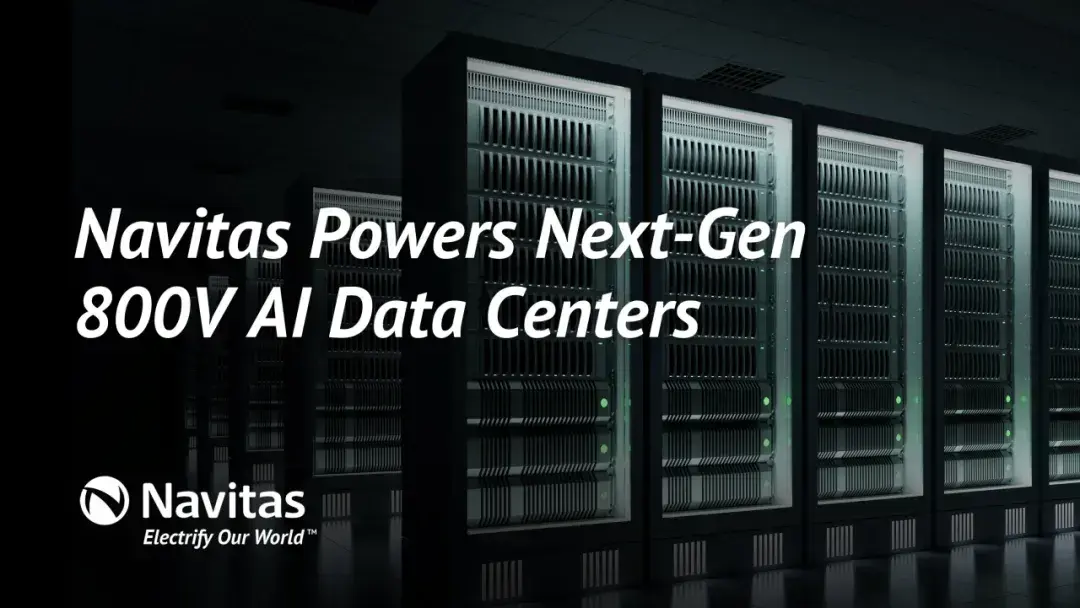
Torrance, California – May 21, 2025 – Navitas Semiconductor (Nasdaq: NVTS) today announced its involvement in the development of NVIDIA’s (Nasdaq: NVDA) next-generation 800V high-voltage direct current (HVDC) architecture, designed to deliver efficient and scalable power transmission for the computing demands of future AI workloads. The architecture aims to achieve higher reliability, improved efficiency, and simplified infrastructure design.
Currently, most data centers use a traditional 54V rack-level power distribution architecture, which supports only several hundred kilowatts (kW) of load. This system relies on large copper busbars to deliver low-voltage power from supply modules to computing units. However, once power demands exceed 200kW, the system encounters physical limitations in power density, copper usage, and overall efficiency.
To meet the rapidly growing power demands of AI computing, modern data centers require gigawatt (GW)-scale power systems. NVIDIA’s innovative approach utilizes solid-state transformers (SSTs) and industrial-grade rectifiers to convert 13.8kV AC directly to 800V HVDC outside the data center. This eliminates multiple AC/DC and DC/DC conversion stages, significantly boosting energy efficiency and system reliability.
Thanks to the high voltage of the 800V DC system, the current required for the same power level is reduced, allowing the copper cable diameter to be decreased by up to 45%. In contrast, a traditional 54V DC system supporting a megawatt-class rack would consume over 200 kilograms of copper—an unsustainable approach for next-generation, GW-scale AI data centers.
With 800V HVDC, IT racks can be powered directly without the need for additional AC-DC conversion. Power is then stepped down via DC-DC converters to supply GPUs, including the Rubin Ultra.
Navitas Semiconductor, leveraging its expertise in gallium nitride (GaN) and silicon carbide (SiC) technologies, has established a leading position in power solutions for AI data centers. Its high-power GaNSafe™ GaN power ICs integrate control, drive, sensing, and critical protection functions, delivering unprecedented reliability and robustness in high-power applications. As the industry benchmark in safe GaN power, GaNSafe offers short-circuit protection (with a maximum delay of 350ns), 2kV ESD protection on all pins, elimination of negative gate drive, and programmable slew-rate control. All these features are implemented through just four pins, allowing the device to be treated like a discrete GaN HEMT with no need for a separate VCC pin.
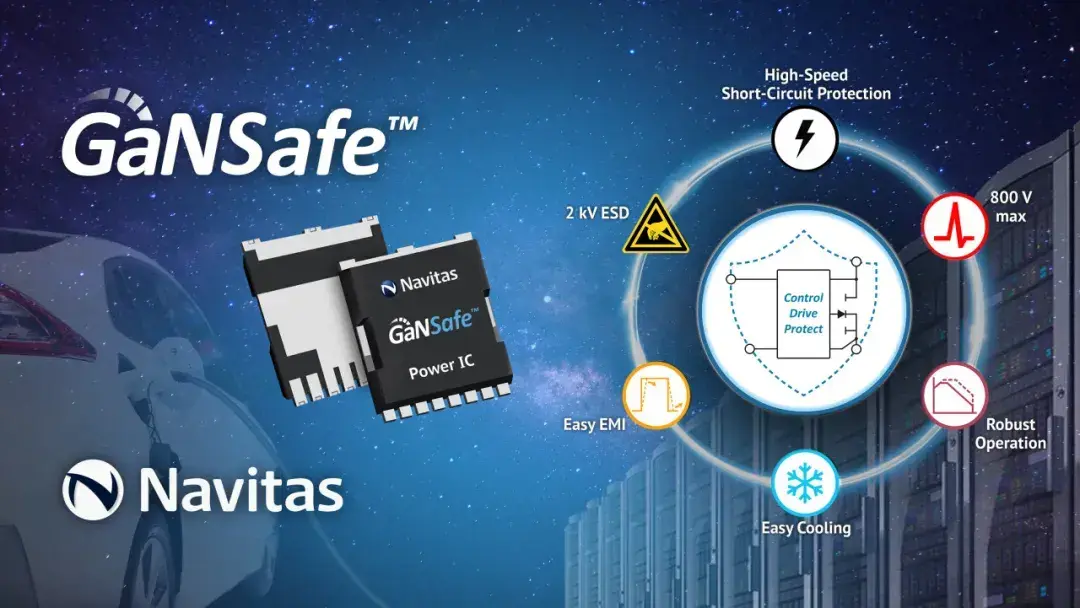
In the secondary-side DC-DC conversion field, Navitas Semiconductor has launched 80- 120V mid-voltage gallium nitride (GaN) power devices specifically optimized for AI data center power supplies with outputs of 48V-54V. These devices enable high-speed, high-efficiency power conversion with a compact footprint.
Building on 20 years of innovation in silicon carbide (SiC) technology, Navitas’ exclusive GeneSiC™ “trench-assisted planar gate” technology delivers industry-leading thermal performance. This provides high-speed, low-temperature power conversion solutions for applications with demanding power and reliability requirements. Compared to similar products, the third-generation fast SiC MOSFETs not only significantly improve efficiency but also reduce case temperature by 25°C and extend lifespan by three times.
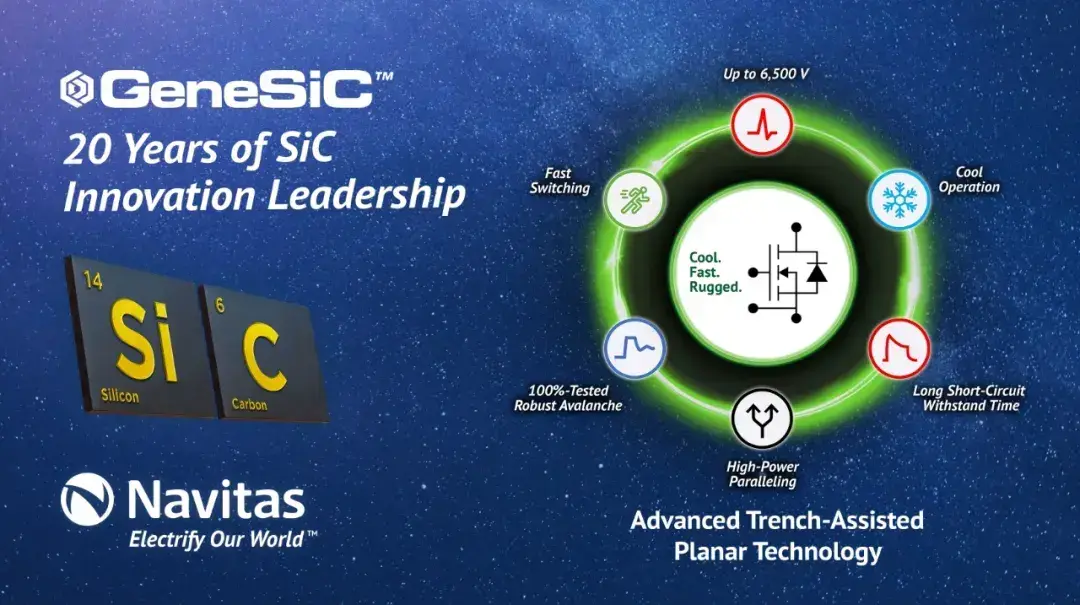
Navitas’ GeneSiC™ silicon carbide products cover an ultra-high voltage range from 650V to 6.5kV and have been successfully deployed in multiple megawatt-scale grid-tied energy storage inverter projects.
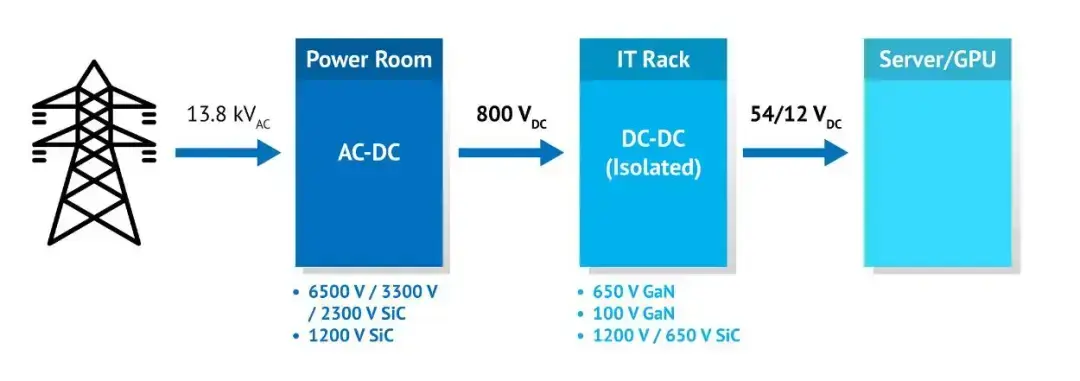
In August 2023, Navitas Semiconductor launched a high-speed, high-efficiency 3.2kW CRPS power supply that is 40% smaller in size compared to traditional silicon-based solutions, making it ideal for AI and edge computing applications. This was followed by the release of a 4.5kW CRPS power supply, achieving a power density of 137W/in³ and efficiency exceeding 97%.
In November 2024, Navitas introduced the world’s first 8.5kW AI data center power supply, utilizing gallium nitride (GaN) and silicon carbide (SiC) technologies to reach 98% efficiency, compliant with Open Compute Project (OCP) and Open Rack v3 (ORv3) standards.
Additionally, Navitas’ self-developed IntelliWeave digital control technology, combined with GaNSafe power devices and third-generation fast silicon carbide MOSFETs, enables power factor correction (PFC) peak efficiency of up to 99.3% while reducing power loss by 30% compared to existing solutions.
During the Computex Taipei International Computer Show on May 21, Navitas held an “AI Technology Night” event to globally debut its 12kW AI data center power supply solution.
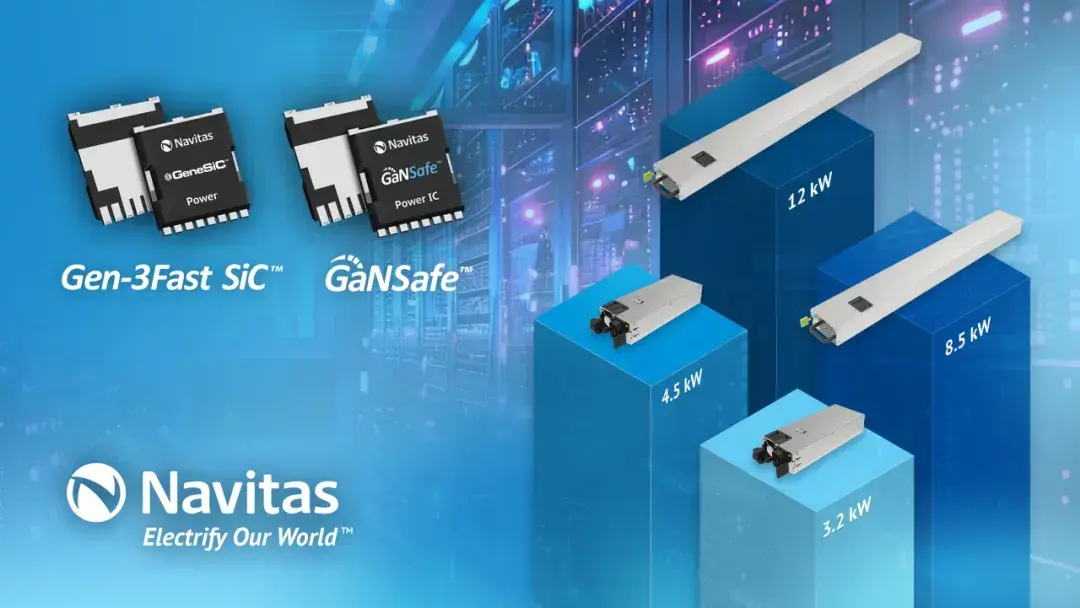
Gene Sheridan, CEO and Co-founder of Navitas Semiconductor
''Navitas is honored to participate in the construction of NVIDIA’s 800V HVDC architecture. Our innovations in high-power gallium nitride and silicon carbide have pioneered multiple global firsts and successfully entered emerging markets such as AI data centers and electric vehicles. Our comprehensive product portfolio enables us to support NVIDIA’s complete power infrastructure from the grid to the GPU in the 800V HVDC system. We sincerely thank NVIDIA for recognizing our technological strength and for driving innovation in data center power delivery."
NVIDIA’s 800V HVDC architecture improves end-to-end efficiency by 5%, reduces maintenance costs by 70% (due to fewer power supply failures), and significantly lowers cooling costs through high-voltage direct current power directly connected to IT racks.
About Navitas Semiconductor
Navitas Semiconductor (Nasdaq: NVTS) is the only company fully dedicated to next-generation power semiconductors and celebrated its 10th anniversary in 2024. Its GaNFast™ gallium nitride power chips integrate GaN power devices with drivers, control, sensing, and protection to deliver products that charge faster, offer higher power density, and are more energy-efficient. The complementary GeneSiC™ silicon carbide power devices provide optimized high-power, high-voltage, and high-reliability SiC solutions.
Key markets include mobile devices, consumer electronics, data centers, electric vehicles, solar, wind, smart grids, and industrial sectors. Navitas holds over 300 issued or pending patents. The company was the first in the industry to offer a 20-year warranty on GaN devices and is also the world’s first semiconductor company to receive CarbonNeutral® certification.

